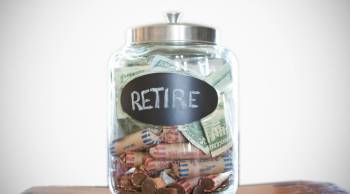Financial rules of thumb are often useful. You have to start somewhere. Rule of thumb also evolve. For instance, it used to be standard advice to put 3 to 6 months of expenses into an emergency fund. The basic guideline is now 6 months to a year, reflecting the unsettling reality that it’s taking laid-off workers a long time to find another job.
When it comes to retirement planning a fundamental standard has been that you’ll need about 70% to 80% of your pre-retirement income when you say goodbye to your colleagues for the last time. It’s not only misleading. It can be hazardous to your living standard in retirement.
For example, in 7 Deadly Retirement Savings Sins Ken and Darla Dolan makes a number of sound suggestions, from warning against putting too many investment eggs in one basket to taking on extra investment risk to make up for lost time and losses. (Years ago I used to go to their studio and be a guest on their show. The Dolans were always charming and professional.) Sin No. 2 stood out:
Underestimating how much money you’ll really need in retirement to maintain your standard of living.
The old chestnut that having 75% to 80% of your pre-retirement income in retirement will suffice is an outdated, inaccurate and dangerous formula.
Have you been to the supermarket, a restaurant or the gas station lately? The cost of living is going up. Plus, while you may have some expenses that go away when you retire, you may also have some new ones to add (such as increased spending on health-care costs or travel).
My twist is that the definition of retirement has changed and that’s why the 70% to 80% guideline is a bad one for most people. An aging generation isn’t really retiring, at least not in the traditional sense of the word. They may say goodbye to their employer, but they’re continuing to work, usually part-time. Call it the partial retirement or the job-tirement.
The lower figure comes from the assumption that a retiree will drop into a lower tax bracket, have more time to shop for deals, will cook at home, and won’t incur many expenses associated with work. But as I wrote in Bloomberg BusinessWeek the rule of thumb is obsolete for the partially retired.
The retiree’s tax bracket may not drop. The dry cleaning bill will probably stay the same. They’re busy and just as likely to grab a burger before a meeting or stop for a takeout meal on the way home as they did before retirement
The other big difference is that older workers need to put a part of every paycheck into savings, just like younger workers. The big reason is the future cost of medical care.
There’s a lot happening in the world. Through it all, Marketplace is here for you.
You rely on Marketplace to break down the world’s events and tell you how it affects you in a fact-based, approachable way. We rely on your financial support to keep making that possible.
Your donation today powers the independent journalism that you rely on. For just $5/month, you can help sustain Marketplace so we can keep reporting on the things that matter to you.


















